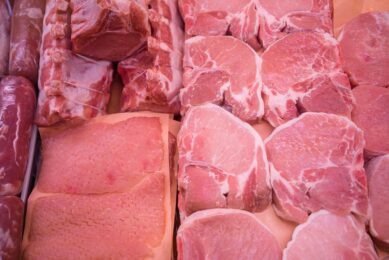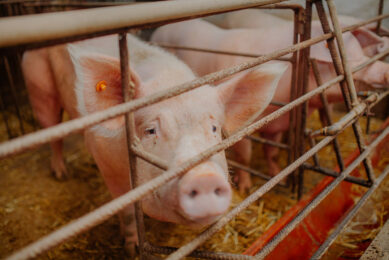Cover crops create new feed opportunities

Primarily grown for the purpose of improving or protecting the soil, cover crops also broaden options for livestock producers by creating new feeding opportunities and providing rest for perennial pastures. 4 international livestock farmers talk about cover crops and share their goals and successes.
Every farmer has a different reason for planting cover crops. Planting a non-cash crop between periods of regular production offers better protection for otherwise bare soil, protecting it from nutrient losses due to leaching or run-off.
Cover crops benefit the soil’s physical and biological characteristics, improving everything from its tilth to its structure to its water-holding capacity. They also help to improve agronomic aspects, include insect, weed and disease control. Finally, they can be used as ‘green manure’ to add organic material back to the soil. Doing so improves biological activity and improves overall soil health.
4 international livestock farmers share their goals & successes.
Lasch is on degraded and overworked rental land with heavy clay soil. Since the ground is often too wet, it’s not possible to put his dairy herd out to graze. Instead, he brings feed he grows to the cattle. In adverse weather years, the fact that he doesn’t have storage facilities adds to the challenges. “I needed to be able to get more feed from our limited land,” says Lasch. But while his first goal is feed, his second is improving soil health and stopping erosion. Cover crops protect soil erosion on hilly land that sees many heavy rain events. Adding cover crops to his management system has been a ‘no brainer’, Lasch says. Being close to the Great Lakes means weather is highly variable, which means planting, fertilising and spraying windows are shorter and tighter. Cover crops, though, have improved versatility, taking the pressure off in terms of timing. “I get more opportunities for optimum conditions,” he says. In a time when Wisconsin dairy farmers are struggling to stay afloat and where the common ideology has been ‘get big or get out’, Lasch has used cover crops as a way to offset risk. “I don’t want to get big, and I don’t have the money to get big,” he states. “So I have to try and find some advantages in other places and the cover crops are really what allow us to do that.” “The versatility and diversity has offset risk – and cheaply,” he concludes. Adam’s tips for success:
|
His definition of diversity includes animals grazing arable fields, different arable crops, companion cropping and even by-cropping. Wheat is the biggest crop on the farm. Some 300 ha of land is devoted to permanent grass, and 40 ha is devoted to herbal rich grass leas, which improve feed quality for the sheep. Lambing takes place outdoors in April. Lambs are finished on forage crops, which include grass and red clover in the summer and fall, and stubble turnips and vetch over winter. It’s a more exciting way to farm at the end of the day.” The farm is a LEAF (Linking Environment And Farming) demonstration farm. As an organisation, LEAF promotes sustainable food and farming and has strong core principles around integrated pest management, said Freestone. “We’re not using insecticides on the arable crops, and we’re trying to reduce fungicides,” he says. “Everything on the farm that is bare ground for more than 4 weeks will have a cover crop planted on it.” Land left over winter will be planted with stubble turnips and vetches as a companion crop or a mixed-species cover crop. “This year, because we had such an awful, wet drilling period last year, we only managed to plant half the crops we wanted to,” Freestone says. “We had a lot of fallow land on heavy clay. I took the decision not to plant an average, break-even-at-best, spring crop and actually put a multi-species cover crop in there over the summer period.” “That’s been brilliant for the soil,” he says. Adding cover crops to the system allowed him to move lambing outdoors. Just a year and a half or so in and he’s seen great improvement both in the land and the health of the sheep. He’s saved nearly € 9,000/year in hay, silage and straw costs alone. Soil health has improved dramatically as well. The Cotswold brash soil, for instance, saw reduced weeds and improved tilth and soil organic matter. The soil has changed colour and smells sweet, he says. It’s also alive with worms and rove and caratid beetles that were not seen before. Changing weather patterns, in terms of variability, longevity and timing, have presented great challenges in recent years. Regenerative agriculture has helped them to better cope, though, said Freestone. Finally, the addition of cover crops has had a marked improvement on mental health, too. “It’s a more exciting way to farm at the end of the day,” he states. “In terms of job satisfaction and being proud of achieving something. It’s interesting and challenging; it makes you explore and try different things.” Jake’s tips for success:
|
These cover crops are helping in a big way.” The fields they’re working have salinity issues and weed problems. Robins said they thought cover crops could help minimise those issues. “The special species of forages we are using are not only benefiting the soil, but also providing a lot of good quality feed for our cattle herd, so we can put more pounds on the calf before selling them,” Robins says. Robins uses the cover crop to provide high energy feed in the late fall. Doing so gives the perennial pasture additional rest during critical growth stages. Last year, Robins seeded oats, fall rye, Italian rye grass, and golden German millet, and followed it with a mix of plantain, chicory, phacelia, and clover. This year, he seeded oats, festulolium, forage peas and faba beans, and under seeded plantain, chicory, phacelia, and clover. Since adding cover crops to their management system the improvements have been many. Salinity issues are slowly disappearing, while soil organic matter is on the rise. As a result, yields are improving. Soil structure has improved so much that places that once saw standing water in wet events now drain well. Weed control has also improved. By resting perennial pastures at critical times and carefully managing grazing, there’s been noticeable improvement in overall condition come spring. “A lot of what’s growing on these pastures should not be doing this well,” says Robins. “But I believe it’s because of the way we are managing the farm.” “These cover crops are helping in a big way,” he adds. Beyond agronomics, Robins says he’s noticed an improvement in calf health as well. The cover crop mixes they’re using include high sugar content plants that boost cattle condition, which is especially important as they get closer to calving season. Finally, cover crops help improve economics as well. “Cover cropping has helped stretch out the winter, so when it comes to feeding bales, we can hold off longer before we have to start using them,” said Robins. “It saves a lot of money, as bales are not cheap.” Quinn’s tips for success:
|
Cover crops are a great fit on livestock farms, and they provide both immediate and long-term returns,” says Mousel. Primarily, they provide a forage opportunity, either harvested or grazed, at a time of the year where usable forage, particularly for grazing, is on the decline. In Minnesota, cover crops provide opportunities to mitigate soil moisture challenges. In a really wet year, when farmers struggle to get their cash crops in they’ll instead plant cover crops for forage, but also to soak up that extra moisture. That has become, in the last 10 years, a very critical component of the whole cover crop equation. “In both spring and fall when we have these really wet periods, we’re seeing a lot more optimisation of land area by using these cover crops where they used to just sit fallow,” Mousel says.” If you couldn’t get in the field, you just didn’t do anything.” More often, he’s seeing farmers move to a fall-planted winter annual cover crop because the overall success rate has been so high. While cover crops offer solutions in terms of feed, he recognises their soil health benefits too. “The consequences of leaving the soil exposed all winter over a 20-year period, that’s a tremendous amount of erosion and soil organic matter loss,” says Mousel. “We need to protect our soil. It’s not a thing to take for granted.” Eric’s tips for success:
|
 Beheer
Beheer





 WP Admin
WP Admin  Bewerk bericht
Bewerk bericht